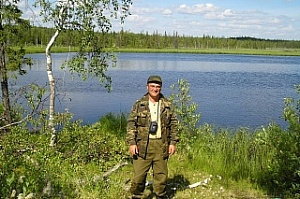The oil cleansing method was developed by TSU researchers and is optimal for lake ecosystems. The experiment proved that the content of oil in water was reduced by 35-40 times.
Data from the research was published in the journal Water Practice & Technology (doi: 10.2166/wpt.2016.017)
- The technology is based on flotation method, said Danil Vorobiev, one of the developers, Doctor of Biological Sciences and director of the Biological Institute. – In the area of oil accumulation, we perform pneumatic and mechanical action and as result oil sticks to the section of the two phases - liquid and air - and rises to the surface.
The technology, developed by TSU, is best suited for lakes with thick sediments: stony, clay, or sandy bottoms. This method allows cleaning both sediments and water and there are no any restrictions on the depth of the pond.
This method does not require using any chemicals. Also, this method can be used in winter when vegetative processes in a lake "freeze" and as a result interference with the underwater world is minimal.
- In the spring and summer, fish and aquatic organisms actively reproduce, therefore it is better to conduct any cleaning work during the cold time of the year, - the TSU scientist says. - It is necessary to take into account the fact that many contaminated lakes in Russia are in remote places, and we can get there and take out the oil from the bottom only by winter roads. For such reservoirs, the under-ice cleaning method is the only option
In cold weather, we move the perforated hose down to the bottom in order to direct the pressurized stream of air to accumulations of oil. As a result, oil rises to the surface and goes via the guide channels laid on the surface to an oil collector. A mobile hangar is installed above the oil collector where heat guns create a favorable temperature for pumping oil. This allows working on cleaning water of oil in any weather, even at -50°C.
In addition, the TSU Biological Institute has received a patent for this invention.

